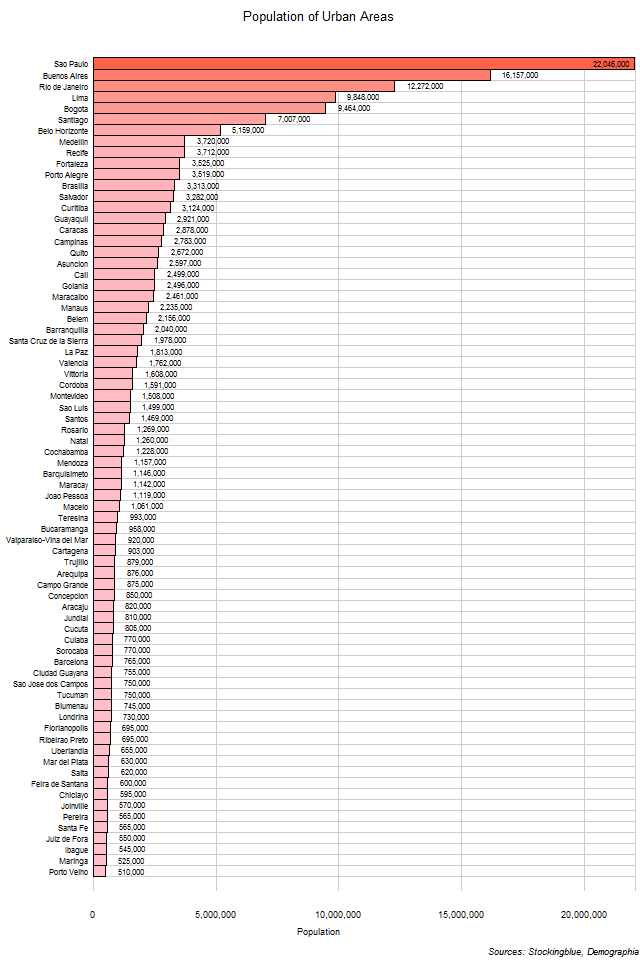
The chart above shows the population of each urban area with a population over 500,000. The urban areas have been normalized so as to avoid any inconsistencies with how cities and their metropolitan areas are defined by their governments. Each urban area has similar characteristics making this the definitive method with which to compare cities across various countries. All urban areas over 10 million people in South America belong to either Argentina or Brazil.
Findings
- The difference between the urban area with the greatest population, Sao Paulo, and the urban area with the least, Porto Velho, is 21,536,000 people.
- Sao Paulo has 43.32 times the population that Porto Velho does.
- The median population of urban areas with a minimum population of 500,000 in South America is 1,151,500 people and the mean 2,439,729.73 people.
Caveats
- Data is from 2020.
- The methodology for how these urban areas have been defined can be found in the source link below. As of this writing this is the most reliable way to compare urban areas throughout the world.
- Some of these urban areas span several states, and the state that is being used here is the one where the core of the urban area is located. For instance, Milan's urban area spans both Italy and Switzerland, but since the core of the urban area is in Italy it would be listed as an Italian urban area and not a Swiss one.
- All figures are rounded to the nearest whole.
Details
Only 10 of the 15 South American states have urban areas with at least 500,000 people. Of these, the Brazil has 36; Colombia has nine; Argentina has eight; Venezuela has seven; Peru has four; Chile and Bolivia each have three; Ecuador has two; and Paraguay and Uruguay each have one.
Of the 74 urban areas with a population over 500,000, 41 have a population of over 1 million. Seven have a population of more than 5 million, and three have a population of more than 10 million.
Peru has the largest mean population in its urban areas over 500,000 people with a mean of 3,049,500 distributed among its four urban areas. Chile has the second largest mean population in its urban areas over 500,000 people with a mean of 2,925,667 distributed among its three urban areas.
Ecuador has the largest median population in its urban areas over 500,000 people with a median of 2,796,500 people distributed among its two urban areas. Paraguay has the second largest median population in its urban areas over 500,000 people with a median of 2,597,000 people distributed among its one urban area.
The Falkland Islands (Malvinas), French Guiana, Guyana, South Georgia and the South Sandwich Islands, and Suriname do not have any urban areas with a population over 500,000 inhabitants.
Sources
Demographia. 2021. "Demographia World Urban Areas: 16th Annual Edition." Accessed March 9, 2021. http://demographia.com/db-worldua.pdf.